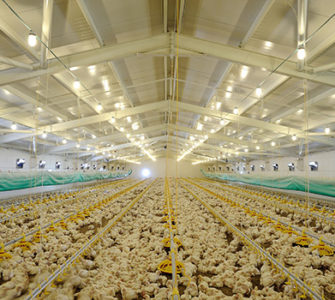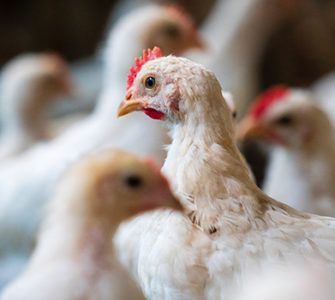Trace minerals, used litter, coccidiosis control key to managing enteritis in NAE flocks
Starting broiler flocks on used litter, coupled with effective coccidiosis control and the use of trace minerals, can help minimize necrotic enteritis (NE) in broiler flocks raised without antibiotics, Steve Davis, DVM, told Poultry Health Today.
Poultry companies with “no antibiotics ever” (NAE) production schemes often use copper and zinc to boost the immune system and lower the incidence of enteric disease. Administration of these minerals isn’t new, but NAE producers are feeding them at higher levels in starter and grower feeds, said Davis, president and CEO of Colorado Quality Research.
He noted that exposing flocks to Clostridium perfringens (CP), the bacterium that causes NE, through the litter is important for stimulating natural immunity to NE, which tends to appear in broilers at 14 to 24 days of age.
Recalling the results of a 2017 study, Davis said the worst outbreaks of NE occurred in the first flocks on new litter after a total broiler house clean-out.
NAE producers have learned that besides used litter, providing longer downtime between flocks is beneficial for controlling disease. Extending downtime from 14 days to at least 21 days decreases bacterial challenges in commercial houses, he said.
The added downtime won’t cause CP spores to disappear, but more downtime allows litter to dry more and destroy coccidial oocysts, Davis emphasized. Coccidiosis is still a primary contributor to the development of NE, so controlling coccidiosis reduces the ability of CP to function as an opportunistic bacterium and pathogen.
What to do if broilers develop NE can pose a dilemma for NAE producers because the birds can’t be marketed with an NAE label if they are treated with antibiotics. Rather than withholding treatment, many NAE producers are using what Davis said is an “ethical” approach — treating broilers with antibiotics if mortality from NE is 0.3 to 0.5 birds per 1,000. Those birds are then marketed under another label, he said.
Posted on September 6, 2018

















